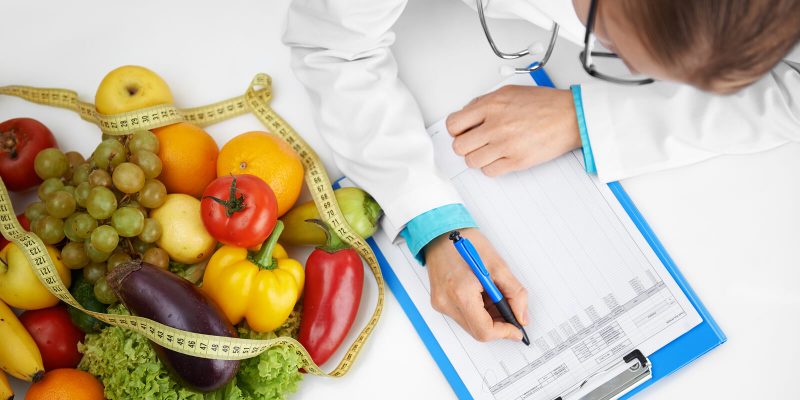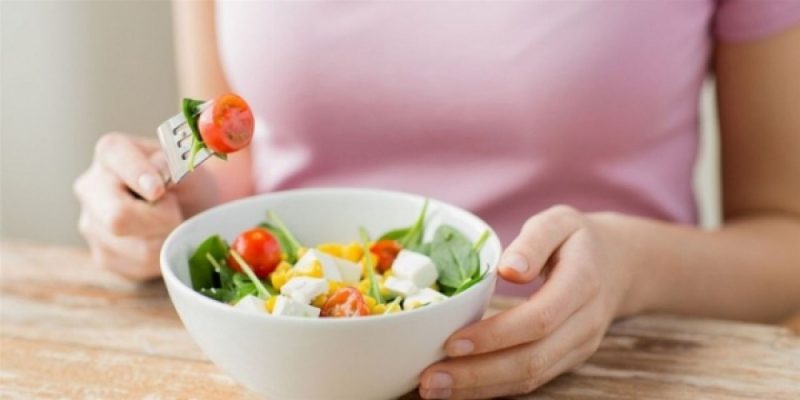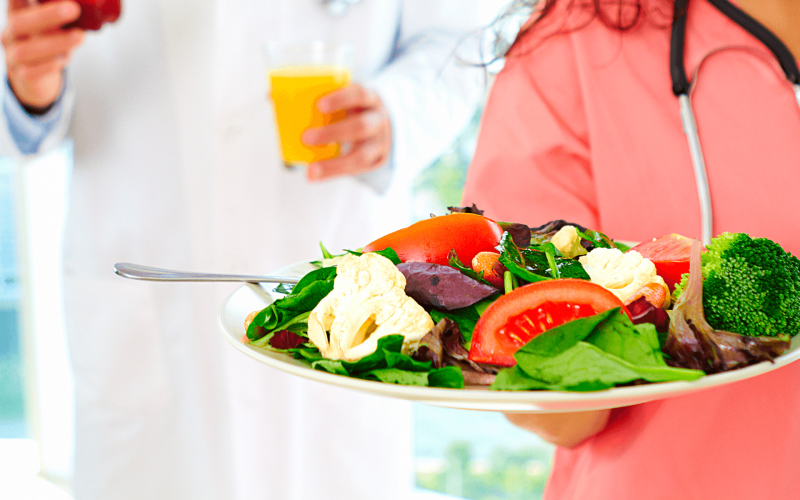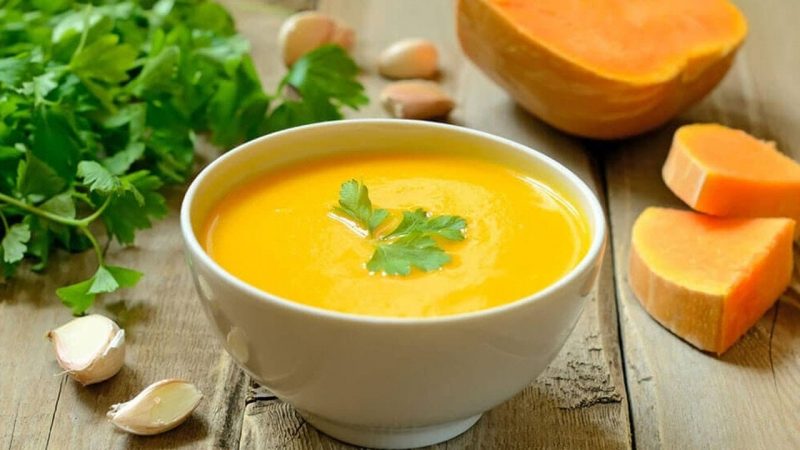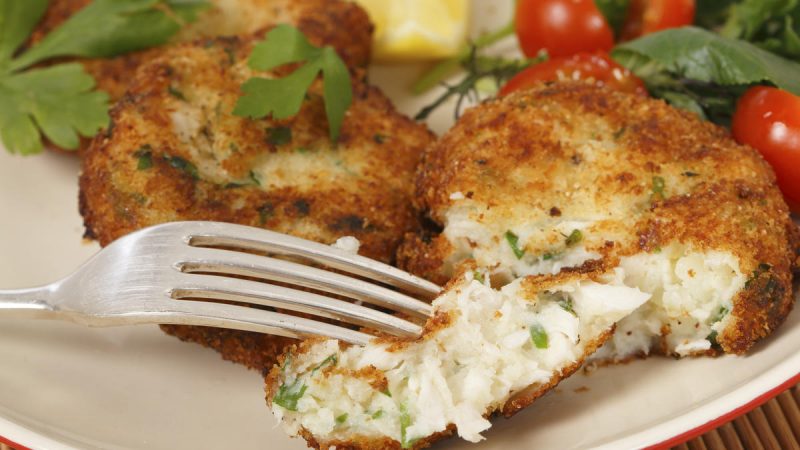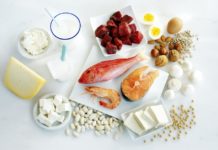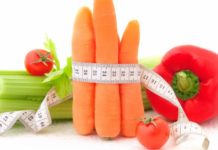Diet for gastric ulcer is an integral and strict condition for the patient. From its observance depends on how successful the treatment will be and the prevention of relapse. This article will tell you more about the menus for this diagnosis.
Material Content:
General nutrition for stomach ulcers
Understanding and following the general provisions of the diet for stomach ulcers, you can yourself form a suitable diet, which will not lead to a worsening of the patient's condition. Let's consider these rules in more detail.
The paramount point is maintaining a diet (permissible and prohibited products are further in the article).
Food must be stewed, boiled, blanched or steamed, but not fried.
It should be added that salt can be present in the smallest amount, ideally dishes without salt.
It is very important to adhere to a sparing menu, that is, eat something that will not irritate the mucous membrane of the stomach. The basic rule is a balanced diet and moderately high-calorie menu.
- Energy value should not be lower than 3000 kcal.
- There are required limited quantities every 3 hours.
- By volume, one serving should fit in the palm of your hand.
- Eat only warm dishes. Burning or ice food badly affects the process of enzyme formation, which will entail a slowdown in the recovery process.
- In the absence of contraindications from the thyroid gland and the genitourinary system, it is advisable to drink up to 2 liters of fluid per day.
It is necessary to take into account the time of digestion of food.For example, a glass (200 ml) of water, broth or tea is in the stomach for about 90 minutes; meat, vegetables and bread - 180 minutes.
Of course, every person has everything individually. The menu stage is affected by the stage of the disease, the location of the ulcer, how old the person is and what his body weight is, as well as the presence of concomitant diseases.
Types of diets for gastric ulcer
Diet can eliminate dyspeptic symptoms, pain and general malaise. In general, it is aimed at healing ulcers. A well-composed menu reduces acidity in the stomach and activates the regeneration process. Regular small portions of food gently affect the gastric mucosa and eliminate inflammation.
General guidelines for all diets at any stage of the disease - there is something that will quickly exit the stomach (mashed foods and liquids).
There are various diets for stomach ulcers and duodenal ulcers. They are recommended, focusing on periods of the disease. Now about this in more detail.
- Diet No. 1 is prescribed for three weeks to those who have a period of exacerbation or recovery. It is necessary to eat every 3 hours only grated, steamed food, which will gently envelop the walls of the stomach. The proportions of carbohydrates, fats and proteins are five to one to one. You can eat dairy and vegetable soups, boiled not very fatty fish, dairy products, baked fruits and yesterday’s pastry.
- Diet number 1a is built on the basis of diet number 1, but here is a stricter list of products. Applicable in the active phase of the ulcer. Strictly forbidden food that increases the secretion of gastric juice. The daily calorie intake is no more than 2 thousand. Proteins, fats and carbohydrates - in a ratio of two to one to one. Diet without flour products and dishes from vegetables. Mashed soups, cereals on cereals, jelly and soufflé are allowed.
- Diet No. 5 is prescribed if there is a remission of the ulcer. This table has a fairly extensive list of permissible dishes. In fact, this can be called good nutrition, restoring the functioning of the digestive tract of the patient. Food should be prepared from foods that contain many vitamins and minerals. You can eat light soups, enjoy cheese, caviar and tongue. It is worth paying attention to fruit and vegetable gifts, which are among the allowed. I must say no to onions and garlic, as well as all fried and greasy foods.
Allowed Products for Disease
At first, you can imagine dishes that are allowed with an ulcer, tasteless. However, do not be skeptical about this in advance. The list of what you can eat is quite wide. You don’t have to be a cook to cook something healthy and tasty at the same time.
So you can eat:
- vegetables without coarse fibers;
- non-acidic fruits and berries;
- milk and dairy products;
- white and lean meat;
- fish
- stale pastries;
- ground cereals.
All of these products should be not fatty, slightly salted and not very acidic.
Fully or partially restricted products
With an ulcer, the patient’s diet changes significantly. Most foods and drinks become restricted or banned. Excluded are products that irritate the gastric mucosa and increase the secretion of gastric juice.
So, you can not regale:
- mushrooms;
- dried fruits;
- nuts
- citrus fruits;
- sweets;
- sausages;
- fatty cheeses;
- alcohol.
Gastric ulcer diet menu
A gastric ulcer, like gastritis, is associated with a specific diet that does not tolerate roasted, oily and spicy. Ideally, these are tender, steamed or oven-made, lightly salted and unflavored dishes. In order to avoid exacerbations, gastroenterologists advise to adhere to the diet constantly, and not only after surgery.
For an ulcer to heal quickly, the body needs vitamins and nutrients. Starvation is appropriate if the ulcer bleeds in the first 48 hours after surgery. However, only a doctor who evaluates the patient’s health is allowed to eat.You need to eat with strict periodicity in small portions. Daily calories - no more than 2.5 thousand kcal.
It is interesting:FGS of the stomach - how to prepare
When forming the menu, you need to remember the calorie content of the ingredients, the ratio of proteins, fats and carbohydrates.
The main block of the diet is preferably a protein food, where fats and fiber are contained in minimal amounts.
In case of exacerbation, it is necessary to reduce the proportion of carbohydrates consumed, because they can cause pain.
The use of fresh fruit juices will help replenish the beneficial substances in the body. For example, an ulcer strictly prohibits eating white cabbage (even boiled), however, its juice will be useful.
It is important to supplement your regular diet with non-fat milk. Soups and cereals are prepared on the basis of fermented milk products, and they are also drunk in their usual form. By the way, honey and propolis strengthen the immune system and help the mucosa recover faster.
Features of the diet after surgery, and at the stage of exacerbation
After the surgery, you must adhere to a "soft" diet. Supplementation of the diet with a new dish must be carried out carefully, it is important to consider the condition of the patient.
- The first two days after the operation are forbidden to eat any food. A person is on medical fasting. Nutrient solutions through a dropper provide the body's natural vital functions.
- From the third day, small doses of liquid food are introduced into the diet. Gastric ulcer is a very dangerous disease that affects the digestive tract. That is why specialists monitor the condition of the patient after each meal.
- After three days, you can replenish the diet with jelly or herbal decoction (do not overdo it with the amount).
- After 6 days, the menu is replenished with weak vegetable soups, liquid foods, steam omelettes and grated rice.
- After 7-8 days, steamed chicken meatballs and mashed vegetables are allowed.
During exacerbation, table number 1 is recommended (a detailed description is presented above in the article). This menu is used for a little over a week in order to reduce the impact on the injured part of the stomach.
- All food that damages the mucous membrane and increases the product of gastric juice should be removed. The diet should consist of boiled or steamed, tender food in a liquid or porridge form and practically without salt.
- It is recommended to eat a little about 6 times a day.
- The correct conclusion to the day will be a glass of warm milk before bedtime.
- In general, no more than 2 kg of food should be eaten per day with a calorie content not exceeding 2 thousand kcal.
Diet recipes
The diet of a person suffering from a stomach ulcer is not as diverse as we would like. However, to make the menu tasty, healthy and nutritious is still not difficult.
Creamy Pumpkin Soup
Pumpkin soup puree is an excellent component of the diet menu for ulcers.
Prepare the ingredients:
- 800 grams of pumpkin;
- 2 potatoes;
- 1 carrot;
- 100 ml of 20% cream.
Cut the orange fruit into cubes and send to the pan. Then we add carrots and potatoes, cut into small pieces. Pour 2 cups of water, salt a little and cook for about 25 minutes (until the vegetables soften). We remove the pan from the stove.
Make a mashed blender (do not pour the broth). Pour the cream, mix and put on the fire again. Stir for a few minutes until the soup warms up, then remove from the stove, without waiting for boiling. Serve with rye crackers.
Baked fish cutlets
Chops for this recipe are allowed and recommended for people with stomach ulcers. Fish saturates the body with important trace elements and vitamins.
- Half a pike perch or pollock twist through a meat grinder.
- Add the raw egg and lightly salt.
- Then boil 1 carrot, pass through a meat grinder and add to the minced meat.
- There we send 3 slices of loaf soaked in milk.
- The resulting mass is mixed well.
- We put parchment on a baking sheet and put the balls of minced meat there. You can slightly press them down with your hands so that they look like ordinary cutlets.
- We cook the dish for about 40 minutes at a temperature of 260 degrees. It should be eaten cool.
Curd Banana Dessert
Diet for ulcers may include desserts, the preparation of which does not require much effort and time.
Take 200 grams of cottage cheese, 1 egg and 1 tablespoon of granulated sugar. Mix all the ingredients well. Put banana slices on the bottom of the special cupcake molds and fill them with the curd mass (1.5 tablespoons will be enough). Dessert is cooked in the oven for approximately 15 minutes.



